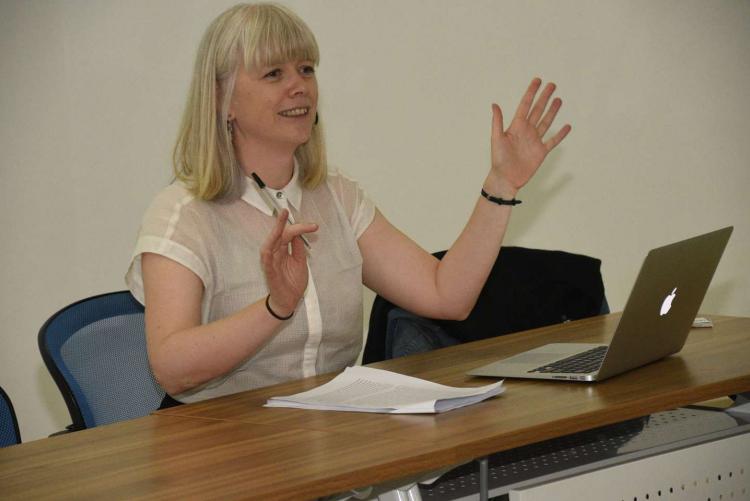The idea that Kenya is made up of 42(+) tribes is widespread, but the origins, nature and consequences of any list of these tribes are not well known. This was the issue in focus during the IDS seminar by Dr Samantha Balaton-Chrimes on 5th December 2019. During the seminar, “Who Are Kenya’s 42(+) Tribes? The Census and the Political Utility of Magical Uncertainty”, Dr Samantha explained the social imaginary of the 42(+), showing its lack of basis in any ethnic list-keeping beyond the 1969 census. In making sense of the origins of ethnic classifications, she provided the history of colonial census practices, demonstrating the role of tax and labour control in classification and counting. She also discussed how these ethnic classifications persisted in the post-colonial period, drawing out how enumeration has been used to anticipate tribalistic ends, and classification to confer recognition.
Dr Samantha, a Senior Lecturer in International Studies at Deakin University (Australia), observed that in Kenya, the imaginary of a nation constituted by 42(+) tribes is widespread and powerful.“The imaginary is roughly factual and fairly normative, entailing an intuition that there must be a list somewhere but no hard knowledge of where, and a conviction that those 42ish ethnicities are rightly and proudly Kenyan, but no rigid sense of who they might be,” she observed. She said though few people can identify it, the 1969 census is the origin of figure 42. Between 1948 and 1989, between 38 and 47 groups were counted, and in 2009 those numbers roughly tripled, with the recognition of a large number of sub-tribes and previously unrecognised tribes.
Tracing the roots of ethnic categorisation in colonial Kenya, the scholar said the British colonial rule was based on an imaginary of Africans as characterised by their ethnicity. It was through ethnic custom that the British practised indirect rule and made it possible to govern ‘on a shoestring’ by co-opting local leaders to implement colonial policy.
“The ethnic classifications that were circulating the time of independence have their origins in the colonial administration’s desire to control, and to extract labour and tax from the African population,” she observed. She posited that upon independence, Kenyans inherited a highly centralised, exclusionary and divisive state that was built on a foundation of imagined essentials, enumerated and territorially contained tribes. In Kenya, she said, the phrase ‘It’s our turn to eat’ is frequently used to describe the expectation of an ethnic group’s chance to benefit publicly and privately from the control of the state and its resources. Dr Samantha argued that while enumeration of ethnic groups can, feed tribalism and xenophobia, the classification of ethnic groups can also serve national cohesion and inclusion. Kenyan politics is not only a story of political tribalism, but also of moral ethnicity, where one’s ethnic group forms the principal locus for determining and evaluating civic virtue.
“The dramatic shift in ethnic classifications in the 2009 census reflects this more inclusive thrust of Kenyan politics, where numerous minorities and marginalised groups, were recognised by the state, many for the first time,” she observed. In conclusion, Dr Samantha said over coming years, some more precision and certainty around the question of who is a tribe of Kenya may be called for. She called for a review of the nation’s electoral and administrative boundaries in 2020.
“Under Chapter 7 of the constitution, one of the considerations for boundary redrawing is ‘community of interest, historical, economic and cultural ties.’ It seems this will require some serious attention to which ethnic groups are where and in what numbers, and perhaps the publication of local-level ethnic statistics, which we have not seen since 1989,” she said.





